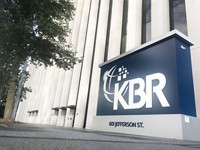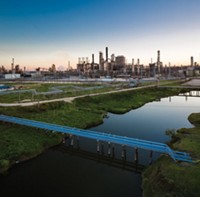Advertisement
Grab your lab coat. Let's get started
Welcome!
Welcome!
Create an account below to get 6 C&EN articles per month, receive newsletters and more - all free.
It seems this is your first time logging in online. Please enter the following information to continue.
As an ACS member you automatically get access to this site. All we need is few more details to create your reading experience.
Not you? Sign in with a different account.
Not you? Sign in with a different account.
ERROR 1
ERROR 1
ERROR 2
ERROR 2
ERROR 2
ERROR 2
ERROR 2
Password and Confirm password must match.
If you have an ACS member number, please enter it here so we can link this account to your membership. (optional)
ERROR 2
ACS values your privacy. By submitting your information, you are gaining access to C&EN and subscribing to our weekly newsletter. We use the information you provide to make your reading experience better, and we will never sell your data to third party members.
Business
Turning Ethylene Into Propylene
by Alexander H. Tullo
April 23, 2007
| A version of this story appeared in
Volume 85, Issue 17

More than 90% of the world's propylene is made as a coproduct from ethylene steam crackers, which convert a range of hydrocarbon molecules into ethylene and other basic chemicals, or from fluid catalytic crackers at oil refineries. But the high growth rate of propylene relative to ethylene and gasoline is creating incentives for technology that boosts propylene production.
Engineers can rely on catalytic cracking technologies to increase the amount of propylene turned out by refineries. And they can turn to olefin metathesis to boost the proportion of propylene made in ethylene crackers by converting ethylene and n-butenes—both 1-butene and 2-butene—into propylene. The metathesis catalyst isomerizes 1-butene into 2-butene.
Metathesis technology isn't new. ABB Lummus Global's Olefins Conversion Technology (OCT) has its roots in research done at Phillips Petroleum in the mid-1960s, years before the pivotal research on the olefin metathesis mechanism and catalysis that was to garner the 2005 Nobel Prize in Chemistry. The first reaction Phillips reported was the disproportionation of propylene to ethylene and butylenes using molybdenum hexacarbonyl catalysts, a reverse of the reaction in commercial use today.
That technology's first licensee, in 1966, was Shawinigan Chemicals, which used it to produce ethylene from surplus propylene at a plant in Montreal. Phillips later licensed metathesis technology to Lyondell Chemical's Channelview, Texas, complex, which started up in 1985 and was the first to use it to make propylene.
Lummus engineered those initial plants. Eventually, Phillips stopped pursuing licensees and the technology languished, says Stephen J. Stanley, vice president of Lummus' olefins and polyethylene business group. "Many times in the course of licensing our ethylene technology, Lummus would identify good fits for the metathesis technology," he recalls.
In 1997, Lummus bought the technology from Phillips. The firm then constructed four pilot plants in Bloomfield, N.J., to gather fresh data. Lummus' first licensee was a Port Arthur, Texas-based joint venture between BASF and Total that started up in 2004 with about 300,000 metric tons per year of propylene capacity.
Today, there are eight OCT units in operation around the world and another 16 under license. When all the plants are running by 2010, they will amass about 5.3 million metric tons of propylene capacity, or roughly 8% of current propylene capacity globally, Stanley says. Given licenses that have yet to be signed, he predicts that OCT plants will represent more than 10% of global propylene capacity by then.
Chuck Carr, director of propylene studies at the Houston-based petrochemical consulting firm Chemical Market Associates Inc., says Lummus' projection is in line with his own expectation that about 13% of propylene capacity will be from on-purpose sources by 2012, mostly from metathesis but also from propane dehydrogenation.
Stanley says the OCT technology enjoys strong financial drivers. Every 1,000 kg of propylene produced requires 700 kg of n-butenes and 300 kg of ethylene. Butylenes, produced in ethylene steam crackers or the fluidized catalytic crackers, are much cheaper than propylene. "You get a fairly big profit margin on the feedstock versus the product value," he says.
In addition, Carr notes, propylene demand globally has outpaced supply and pushed up prices relative to ethylene. In North America, propylene is currently selling at 120% the price of ethylene, he says, compared to 70-80% traditionally.
Some companies have gone to the unusual length of making propylene out of ethylene only. An ethane-based ethylene cracker being constructed in Abu Dhabi, United Arab Emirates, by Borouge will include a dimerization unit to convert ethylene into n-butenes that then will be metathesized with ethylene into propylene in a 750,000-metric-ton OCT unit. Similarly, a potential licensee in the Middle East may supplement n-butenes from a naphtha cracker with dimerized ethylene, Stanley says.
- Refining Chemicals
- Petrochemical makers are looking beyond the ethylene steam cracker as a source of olefins
- Technology
Turning Ethylene Into Propylene





Join the conversation
Contact the reporter
Submit a Letter to the Editor for publication
Engage with us on Twitter